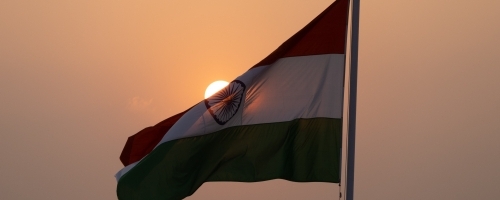Sign up to our newsletter Back to news
India’s place and positioning in the world

India has overtaken China as the country with the world’s largest population and appears to derive from it a higher political relevance in world affairs. But how solid are the underlying trends needed for more global influence? According to The Economist Intelligence Forecast, India’s GDP growth rate outnumbers by far that of all other relevant global economic powers. On this basis, India is set to become the market of the future. But how wide is the gap between India and the current largest markets today? In a GDP-related ranking, India holds the fifth position behind the USA, China, Germany and Japan. A genuine top position, however, appears to be a more distant prospect: India’s economic overall weight is one fifth of China’s only and even less, one seventh, of that of the USA. “Market of the future” means, therefore, rather “of a distant future”.
One other factor of political weight lies in military power. Against the undisputed second rank of China, India may prevail with its out-of-area power projection experience: it is one of the largest UN peace-keeping troops providers and is actively engaged with its naval forces in the alliance-like setting of the Quadrilateral Security Dialogue (Quad) with the US, Japan and Australia. But facts and figures are sobering. India’s defence spending, roughly the same as Japan’s, is one fifth of China’s and one twelfth of US military spending. Where do these facts put India on the global geostrategic power equation between the very big? China seeks to establish a bi-polar world order by challenging the global dominance of the US, which stands for a liberal and rules-based international order. It follows a strategy of going on its own, without creating or joining formal alliances for its strategic purpose. The strength of the US, however, lies in its world-wide network of alliances, landing rights for its air and naval forces and intelligence cooperation monitoring military moves by others everywhere, apart from the sheer size and sustained growth of its defence budget.
According to their political rhetoric, the Indian Government want to attain their geostrategic goal of becoming a global power by seeking to transform the international order into a multi-polar structure. In such an order only, India assumes that it would become one of those poles and hence a great power. The tools are multi-purpose foreign policies. Based on a historic legacy, but still to the surprise of Western powers, India refused to join the Western-inspired international condemnation of Russia’s war of aggression against its neighbour Ukraine. Then, in a coherent logic, India ignored international sanctions against the aggressor and continued to buy Russian oil and gas, thus economically feeding Russia’s war effort.
As a general effort and ambition, India is seeking to become the leading voice for the Global South, reminding the world of its by-gone leading role in the late Non-Aligned Movement of the fifties and sixties. In the framework of BRICS, uniting the “emerging economies” of Brazil, Russia, India, China and South Africa, India was visibly hoping to find its position as a leader against the Industrialised Nations of the G-7. But China’s strategy, at the recent BRICS summit in Johannesburg, to enlarge BRICS by six additional members, dealt a blow to India’s dreams. The BRICS enlargement as planned will rather be an extension of China’s global outreach than a promotion of Indian dreams of a multi-polar world.
Against this background, there is, in India’s foreign policies, a clearly sustained tendency to strengthen its network with Western powers, through closer procurement and military cooperation and through common efforts to contain Chinese expansion into the Indo-Pacific. Another surprising positioning was Prime Minister Narendra Modi’s unprecedentedly pro-Israel response to the Oct. 7 Hamas attack. It was for more recent partners in a stark contrast to India’s traditionally nonaligned and slow-evolving Middle East policy. Later, and after major Israeli retaliation, Modi’s initial sharp statement against Palestinian terror was followed by more balanced statements, reiterating the Government’s support for the two-state solution and pledging humanitarian aid to Gaza.
To sum up, India will remain good for surprises in the eyes of its newly-found Western partners, but also for its traditional partners in the Global South, probably implementing and thus demonstrating, how India plans to become a genuinely great power and one of the leading poles in a multi-polar order still to be created.
December 15, 2023 / Philippe Welti
Comments :
- No comments


Post a comment